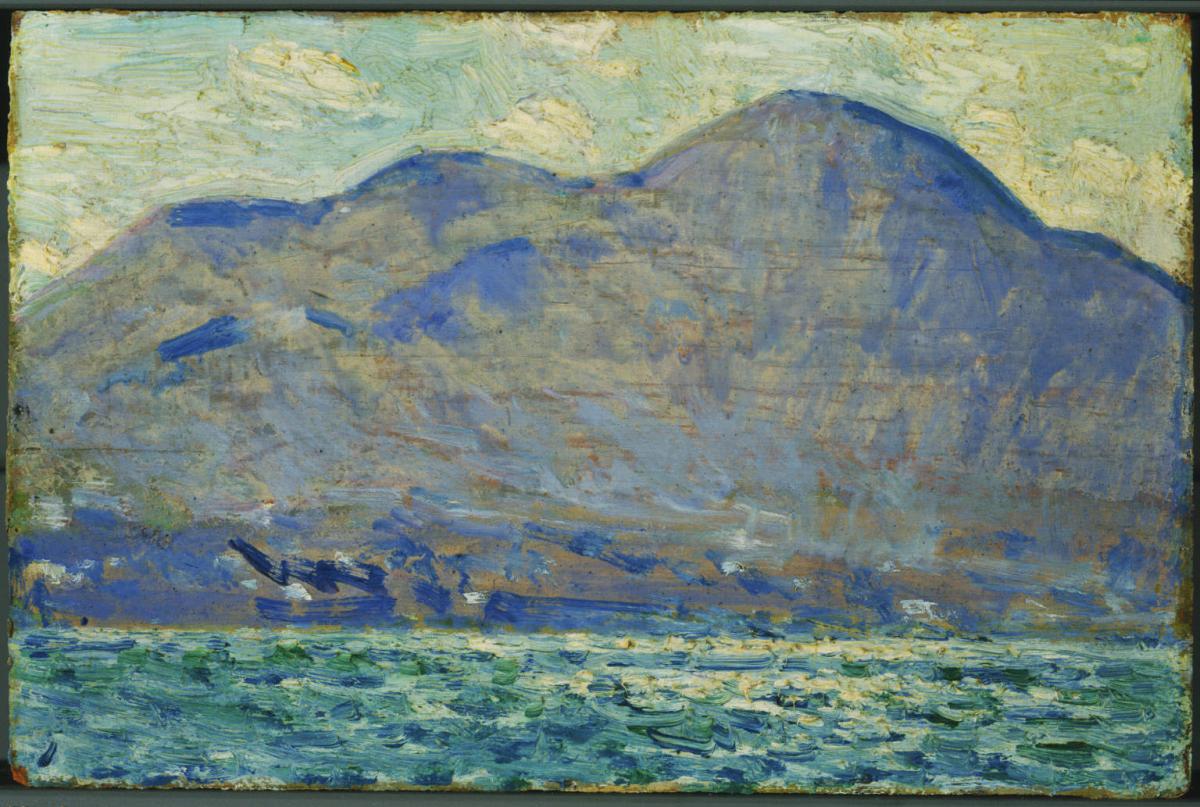Mt. Beacon at Newburgh
Childe Hassam ( 1916 )

Childe Hassam established himself in the 1880s as an American Impressionist with a talent painting city scenes. Late in his career, he began to paint more landscapes that had a lighter and more spontaneous feel to them and became known as the “American Monet.” Hassam tended to paint quickly and out of doors, completing between 30 and 40 canvases a year. Hassam’s paintings feel alive and are emboldened by his fast brushwork and bright color palette. Art critic Sadakichi Hartmann once said of Hassam: “To me Childe Hassam is primarily a great painter of air and soil, of sea and sky. He feels the repose and beauty, the strength and immensity of nature in the simplest scenes.”
Upon returning to the United States in 1889 after an extended stay in Paris, Hassam regularly traveled along the New England coast during the summer months, visiting small towns, artist colonies and painting along the way. In summer 1916, Hassam spent some time in July in Newburgh, New York, where he painted Mt. Beacon at Newburgh. This tiny landscape captures an instantaneous moment of the mountain and river that Hassam would have seen during his stay. The painting’s miniscule size and thick, almost sloppy brushwork suggests that Hassam painted this in just a few moments, trying to capture the mood of the warm summer sun against the landscape.
When Duncan Phillips first began collecting Hassam, they had a cordial relationship, but it quickly soured. Phillips ranked Hassam below Twachtman and Weir, and Hassam took offense to any art criticisms made by Phillips. Also, Hassam most likely was unhappy that Phillips began collecting modern art, as he detested it. In 1928, the two parted company. Phillips sold most of his Hassam paintings, but kept a few canvases citing their significance. He kept Mt. Beacon at Newburgh for his private collection likely because his wife enjoyed the painting and was from the area.